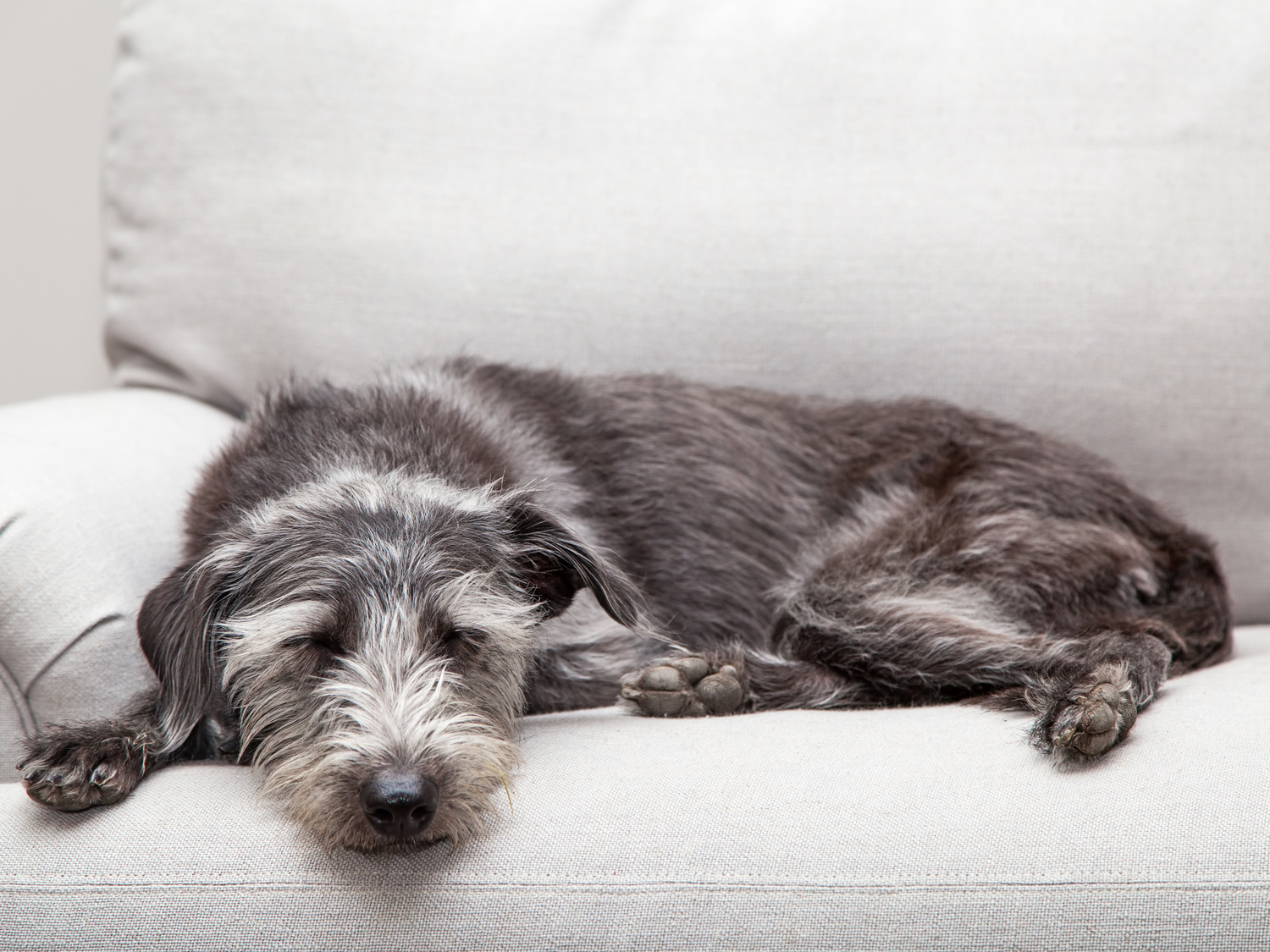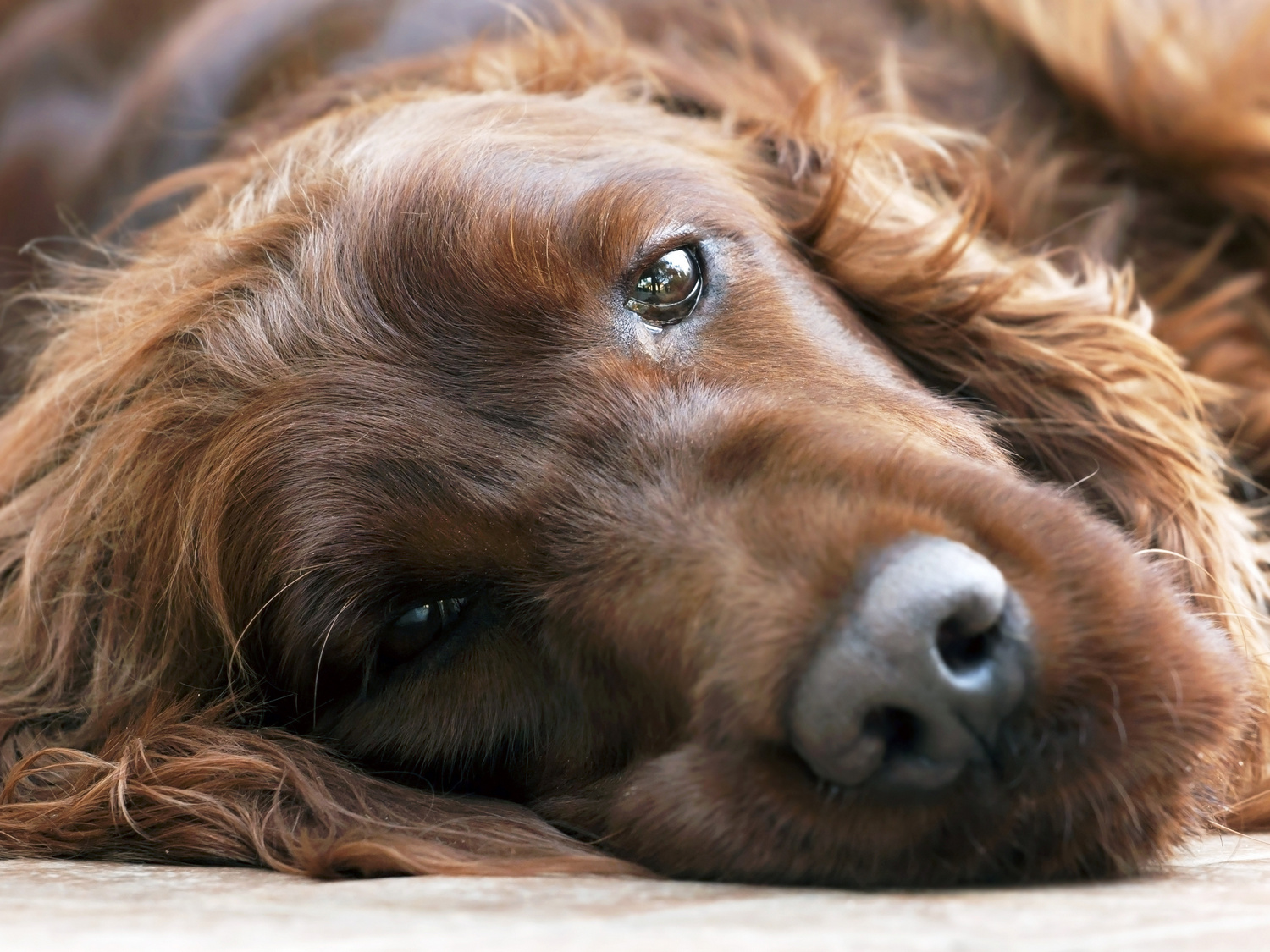Do you need help?

What is peritonitis in dogs?
Peritonitis is an inflammation of the peritoneum – the membrane that lines the inside of a dog’s abdominal cavity. It is a very serious and painful disease which, sadly, is often fatal.
There are two broad types of peritonitis – primary peritonitis which comes on spontaneously without any pre-existing conditions in the abdomen, and secondary peritonitis which occurs as a result of an underlying primary disease process within the abdomen. Secondary peritonitis is most common in dogs while primary peritonitis is quite rare.
Secondary peritonitis can be further split into two categories – septic and non-septic – with septic peritonitis being the most common.
I'm worried my dog has peritonitis, what should I do?
Peritonitis is an extremely serious, life-threatening condition which requires immediate, intensive veterinary treatment. If you suspect your dog has peritonitis, contact your vet immediately or, out of hours, your nearest Vets Now pet emergency clinic or 24/7 hospital.

You might also be interested in:
What causes peritonitis in dogs?
The most common type of peritonitis is septic peritonitis, which is caused by a bacterial infection. This can occur by contamination of the abdominal cavity from an external wound (eg. trauma), or more commonly the perforation of an abdominal organ. Perforation of a dog’s gastrointestinal (GI) tract is one of the more common causes of septic peritonitis. This can occur when they swallow a foreign body, like a toy. Occasionally a perforating stomach or intestinal ulcer can be caused by an adverse reaction to certain types of medications eg. steroids and non-steroidal anti-inflammatory medications.
Other possible causes of septic peritonitis include complications from previous abdominal surgery, liver abscess, inflammation of the pancreas (pancreatitis), rupture of the gallbladder or bile duct, rupture of an infected uterus (pyometra), or rupture of the bladder.
In rare cases, peritonitis may be caused by an infection that has spread from the bloodstream, for example, viruses, parasites, fungi, or bacteria. In other cases, the cause is unknown.
What are the symptoms of peritonitis in dogs
Peritonitis in dogs symptoms can include weakness, rapid breathing, vomiting, loss of appetite, diarrhoea, decreased defecation, black stools, unwillingness to lie down and showing visible signs of pain, including reluctance to let you touch their abdomen. Sadly, sudden death can also occur due to shock from the large amounts of bacterial toxins.
Other clinical signs, which your vet may be best placed to identify, include fever, shock, low blood pressure, bleeding, pale gums, jaundice, rapid heart rate, obstruction of the intestines, abdominal swelling, fluid accumulation in the abdomen and abdominal masses.

How will my vet diagnose peritonitis in dogs?
In order to diagnose peritonitis, your vet will typically consider your dog’s symptoms and their health history and ask you about any possible factors that may have caused the issue. If they suspect your dog has peritonitis, they may perform a complete physical examination, as well as further tests which could include blood tests, x-rays and abdominal ultrasound. They may also take a sample of abdominal fluid to analyse.
How is peritonitis in dogs treated?
First, your vet will typically deal with any consequences of peritonitis, for example, pain, shock, or fluid loss. They may also attempt to identify the underlying cause of the inflammation and work to eliminate it.
Once your pet has been stabilised, further treatment may include surgery in order to explore the abdomen and fix any problems, then thoroughly rinsing your dog’s abdominal cavity to remove any contamination.
After surgery, drains may be used to make sure that any abnormal fluid continues to be removed.
Treatment after surgery can include fluids, electrolytes, and antibiotics. Many animals with peritonitis won’t eat after surgery, so they may need to be fed via a tube which is placed in the nose.
How can I prevent the risk of peritonitis?
Due to the number of different possible causes of peritonitis in dogs, there is no single way to prevent the disease. However, as an injury due to foreign body ingestion is one of the main causes of peritonitis in dogs, keeping unsuitable items well out of your dog’s reach is vital.

